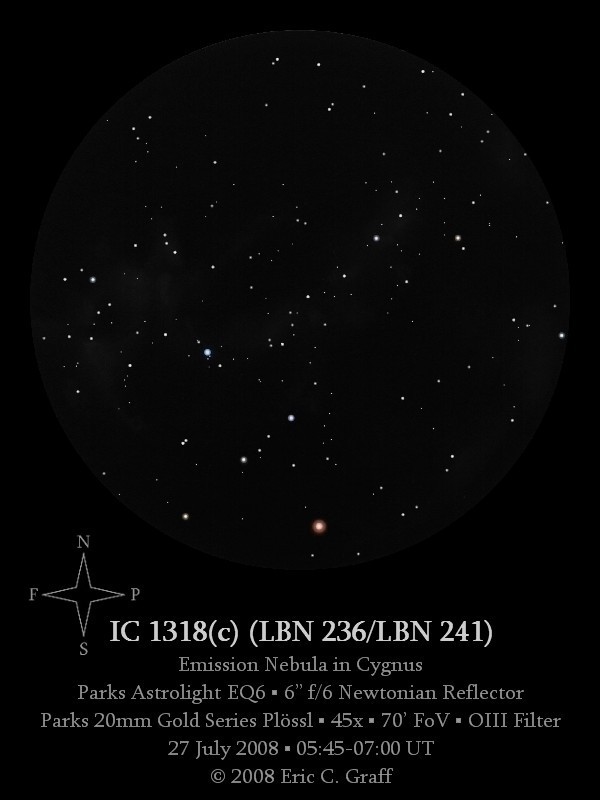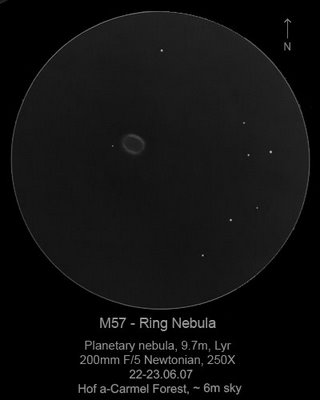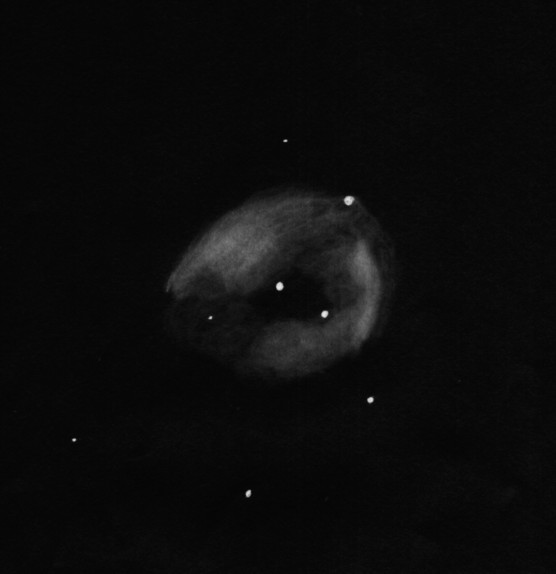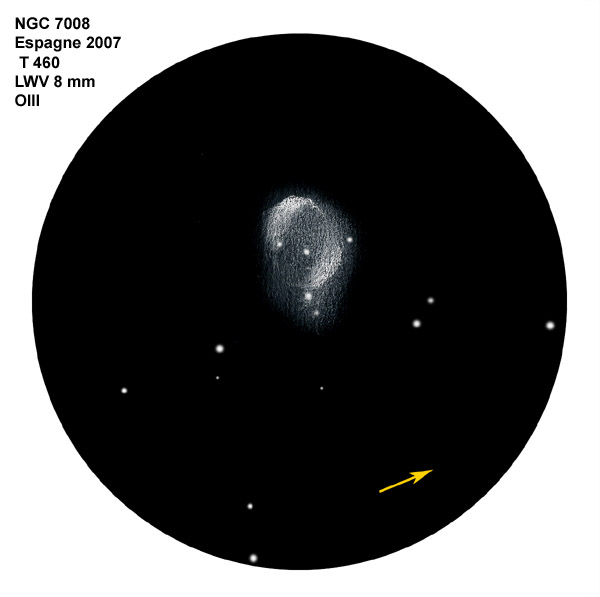Barnard 68 and 72 (The Snake Nebula)
Sketch and Details by Kiminori Ikebe
B68 Oph dark nebula Difficulty level: 3/5
B72 Oph dark nebula Difficulty level: 4/5
The Snake Nebula
Date of Observation: 2002/08/02 22:51
Observing Site: Gokase
Transparency/Seeing/sky darkness: 5/2/5
Instruments: 50cm Dobsonian and XL40
Magnification: 60x
Width of field: 1.1 degrees
These are good photographic objects but difficult visually.
There are numerous faint stars in the field, although they are not as dense as in the center of the Milky Way Galaxy. Against this background a dark nebula shaped ‘S’ is visible faintly. The southern part of the winding dark nebula is wide and clear. It is conspicuous because the background is bright. It is not curved smoothly but bent sharply at two places. The northern part is bent at one place. The end of the northern part is not clear. There is a small separate dark nebula visible southwest of the Snake Nebula. This is B68. This is more clearly seen than the Snake Nebula because the background is bright. It is triangular with its corners being roundish.















